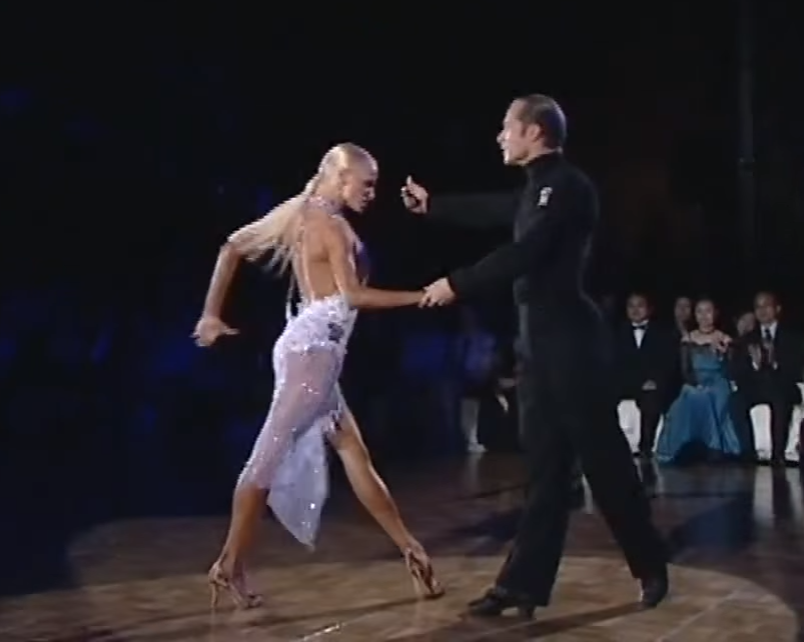Let your Connection Breathe 
14 September 2016
Have you ever noticed that the connection between two great dancers seems to undulate, almost as if it were breathing? This is not just for effect - it has real mechanical reasons, and doing it right helps your dancing and your partner's dancing, too. This article will teach you how to allow for that breathing within the connection by giving you concrete steps you can follow to make your dancing more advanced today.
Action and Reaction
Apart from side by side figures, every major movement the Lady does in Latin should look as if she did not know it was coming, and it was led by the Man. In order to make this illusion convincing, the Lady always needs to be slightly later than the Man, because human beings have reaction times. When the Man starts moving, it takes a split second for the Lady to realize he is moving and react appropriately, so if she acts at the exact same time as him (or worse, if she acts before him), the whole movement looks staged. Now, the whole movement in truth is staged, but we do not want it to look like that. Make sure this is not exaggerated, however. If the Lady's reaction time takes too long, she will look as though she is not properly paying attention or following.
Look at this slow-motion video of former Professional Latin World Finalists, Franco Formica and Oxana Lebedew, performing the first step of an Alemana (N.B. Franco dances a Cucaracha instead of a Forward Check, which is an Open variation).
Notice how his body moves, but the connection remains still, then the wave of energy moves through the connection, and finally results in the action of his partner. In reality, the principle of action and reaction has an intermediary step, which is the transmission of the message.
Forward and Back
One of the places where this breathing of the connection is used most is when the Man dances a Checked Forward Walk and the Lady dances a Back Walk, then transfers her weight forward, such as in the Closed or Open Basic Movements in Rumba or Cha Cha. Walter Laird, the founding father of Latin dancing, describes it like this:
The Checked Forward Walk and the Backward Walk in Rumba and Cha Cha Cha, when danced in Closed Hold or Open Position, are not exact counterparts. The movement of the man's body forward initiates the lady to commence her Backward Walk. Then, the man's contact arm(s) must 'breathe' to allow the lady to complete her backward Walk. -Laird 1961
When the Man dances a Checked Forward Walk, his weight ends between feet, however, when the Lady dances a Back Walk, her weight ends over her back foot. There is no such thing as a Checked Back Walk (because the knees don't bend that way), so in the Closed or Open Basic, those first two steps are different for the Man and Lady. The way to deal with this is to allow the connection to breathe. When the Man stops with his weight between feet on step 1, the Lady is also between feet, but she needs to arrive over her back foot. Therefore, the Man will extend his arm forward until the Lady has moved her weight over the foot, thus resulting in them being farther away from each other. On the following steps when the Lady comes closer to the Man, he will retract his arm slightly.
General Principle
In Latin, every step you take changes your relationship to your partner, which is a big deal, since the point of Latin dancing is to dance with your partner. On every step there should be a compression or an expansion between the two of you, not generated by muscular force from the arms, but from the relationship of your bodies changing. The arms are simply a means of allowing this relationship to change - they are a medium for the transmission of information, not the generator of that information. The next time you practice, pay attention on each step to what happens to your spacial relationship to your partner. This is how you get your connection to breathe.